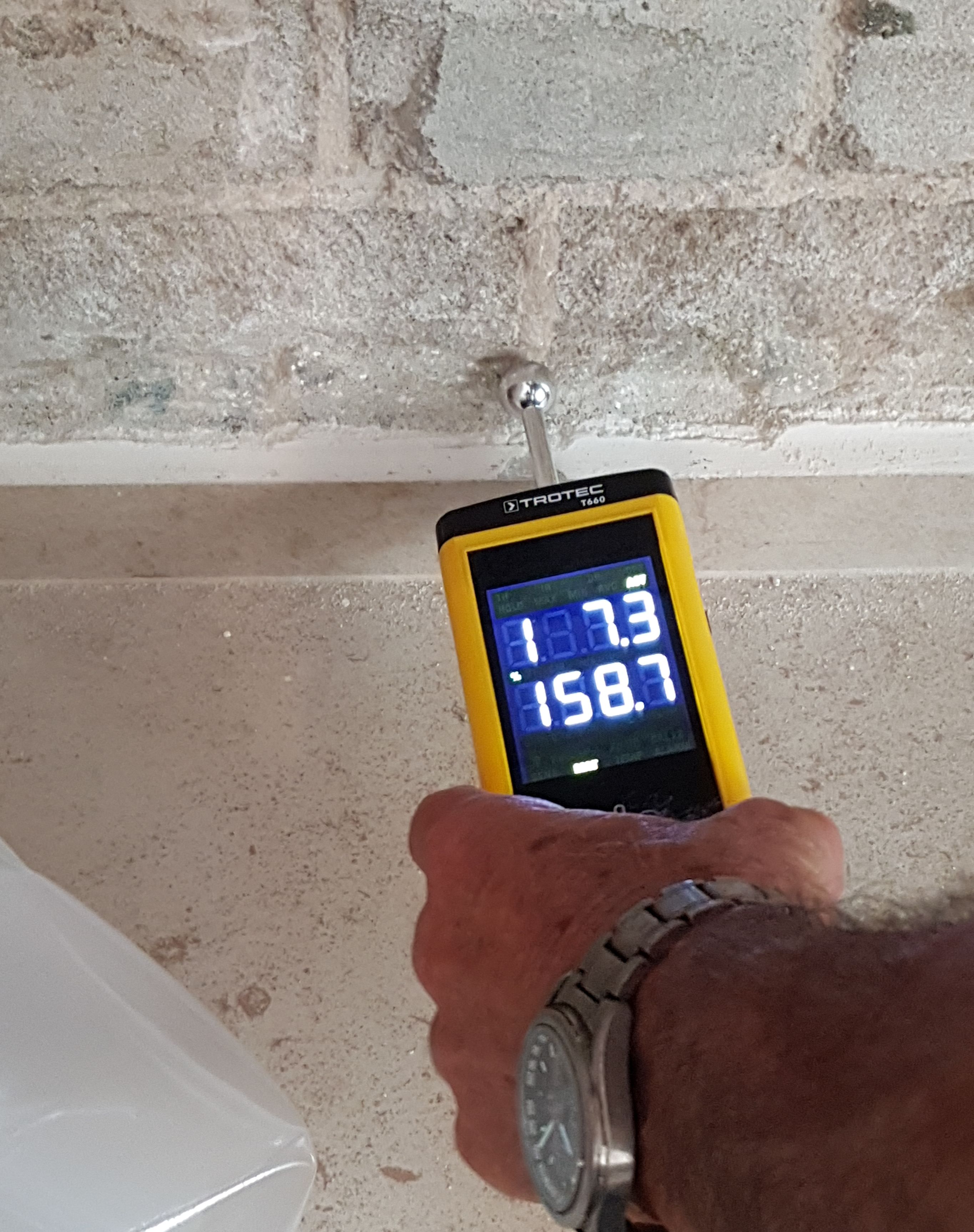Leading 10 Benefits of Using a Moisture Meter for Definite Measurements in Your Home
Leading 10 Benefits of Using a Moisture Meter for Definite Measurements in Your Home
Blog Article
Recognizing the Importance of a Moisture Meter in Protecting Against Mold and Water Damages in Your Home
In the world of home upkeep, the presence of moisture can typically be a quiet yet powerful opponent, capable of causing pervasive mold development and insidious water damage if left unchecked. Comprehending the value of a moisture meter in this battle is not merely an option but a calculated need.

Value of Moisture Detection
Efficient wetness discovery techniques are vital for guarding homes and stopping possible mold growth and water damage. Moisture can seep into different structure products, causing architectural problems and wellness hazards - Moisture Meter. By utilizing a moisture meter, residential or commercial property owners can proactively determine locations susceptible to excess wetness, enabling timely intervention and mitigation techniques
Wetness meters provide exact analyses of moisture degrees in various products such as drywall, wood, and concrete. This data helps in pinpointing locations of concern, also in concealed or hard-to-reach areas. Early discovery of dampness buildup makes it possible for punctual fixings or modifications to stop further damage.

Just How Wetness Meters Work
Moisture meters play a crucial role in the proactive identification of excess wetness, helping in the prevention of prospective mold development and water damage by offering precise readings of dampness degrees in various structure materials. These devices work based upon different principles, depending on their type. Pin-type dampness meters, for example, have 2 pins that pass through the product to measure the electrical resistance in between them. When wetness exists, it enhances the product's conductivity, causing a lower resistance analysis. Pinless dampness meters, on the various other hand, use electro-magnetic sensors to check the material without creating damages. These sensors release electromagnetic signals that pass through the product and measure the dielectric residential properties, indicating wetness content. Some progressed dampness meters pin both combine and pinless innovations for extensive moisture detection. Recognizing how moisture meters function is necessary for precise and prompt wetness degree analyses, enabling effective precautionary actions versus mold and mildew and water damages.
Finding Early Indication
Upon preliminary inspection of a property, identifying subtle indicators of excess moisture comes to be important in the very blog here early discovery of potential mold and mildew development and water damages. Water discolorations can signal leakages or infiltration, while peeling paint or wallpaper might be a result of moisture compromising the adhesion of these materials to the surface. Furthermore, a boost in allergy signs and symptoms or respiratory system issues among residents may suggest the visibility of mold and mildew due to excess moisture.


Stopping Mold And Mildew Development
Identifying early caution signs of excess dampness within a building not just enables timely discovery of potential mold and mildew development and water damages yet likewise offers as a positive action in protecting against the spreading of mold and mildew. To properly avoid mold and mildew development, it is important to resolve any resources of dampness promptly.
Along with dealing with moisture resources, maintaining interior humidity levels below 60% can significantly inhibit mold and mildew development. Correct air flow, ample insulation, and utilizing air conditioning unit or fans can assist control interior humidity levels. Monitoring dampness levels in locations prone to wetness, such as cellars and crawl rooms, making use of a dampness meter can also help in early detection of elevated wetness levels and prospective mold and mildew development. By taking positive actions to stop excess wetness and mold development, homeowners can protect their residential or commercial property and interior air high quality.
Advantages of Routine Monitoring
Normal surveillance of wetness levels in a residential property can play a vital useful content function in maintaining a healthy and balanced indoor setting and protecting against prospective mold and water damages. By on a regular basis checking dampness degrees, property owners can detect any type of issues without delay and take necessary activities to avoid mold and mildew development and water damage. Among the crucial benefits of normal tracking is early detection. By identifying and attending to high wetness degrees at an early stage, homeowners can step in before mold has the opportunity to spread and create. This proactive technique can conserve both money and time in the lengthy run by protecting against substantial mold and mildew remediation and repair service expenses (Moisture Meter).
Additionally, regular monitoring permits house owners to track patterns and trends in moisture degrees over time. Inevitably, the constant monitoring of moisture degrees equips homeowners to safeguard their residential or commercial property, protect their wellness, and protect the integrity of their interior atmosphere.
Final Thought
In final thought, the usage of a moisture meter is important in preventing mold and water damage in homes. By discovering very early caution signs of dampness, homeowners can take positive procedures to protect against mold growth and pricey repairs.
By using a dampness meter, home proprietors can proactively recognize locations vulnerable to excess moisture, allowing for timely intervention and mitigation techniques.
Dampness meters give accurate readings of moisture levels in different products such as drywall, concrete, and wood.Moisture meters play an essential duty in the aggressive recognition of excess click this site dampness, helping in the avoidance of possible mold and mildew development and water damages by supplying exact analyses of dampness degrees in numerous structure products. Recognizing how moisture meters function is vital for timely and accurate moisture degree assessments, enabling effective preventive measures versus mold and mildew and water damages.
Keeping track of moisture levels in areas prone to wetness, such as basements and creep areas, utilizing a wetness meter can also help in very early detection of elevated dampness degrees and prospective mold development.
Report this page